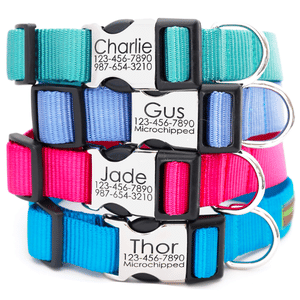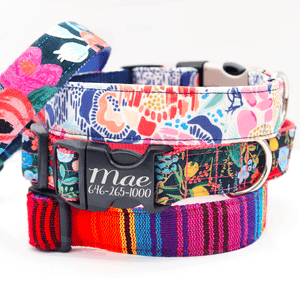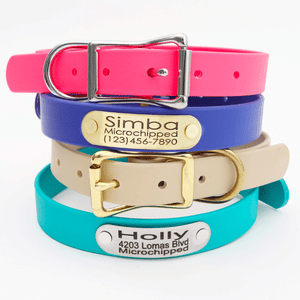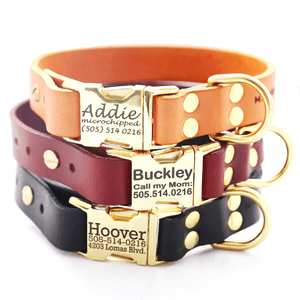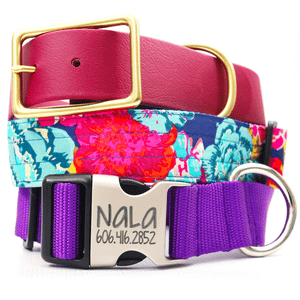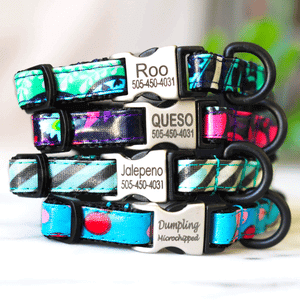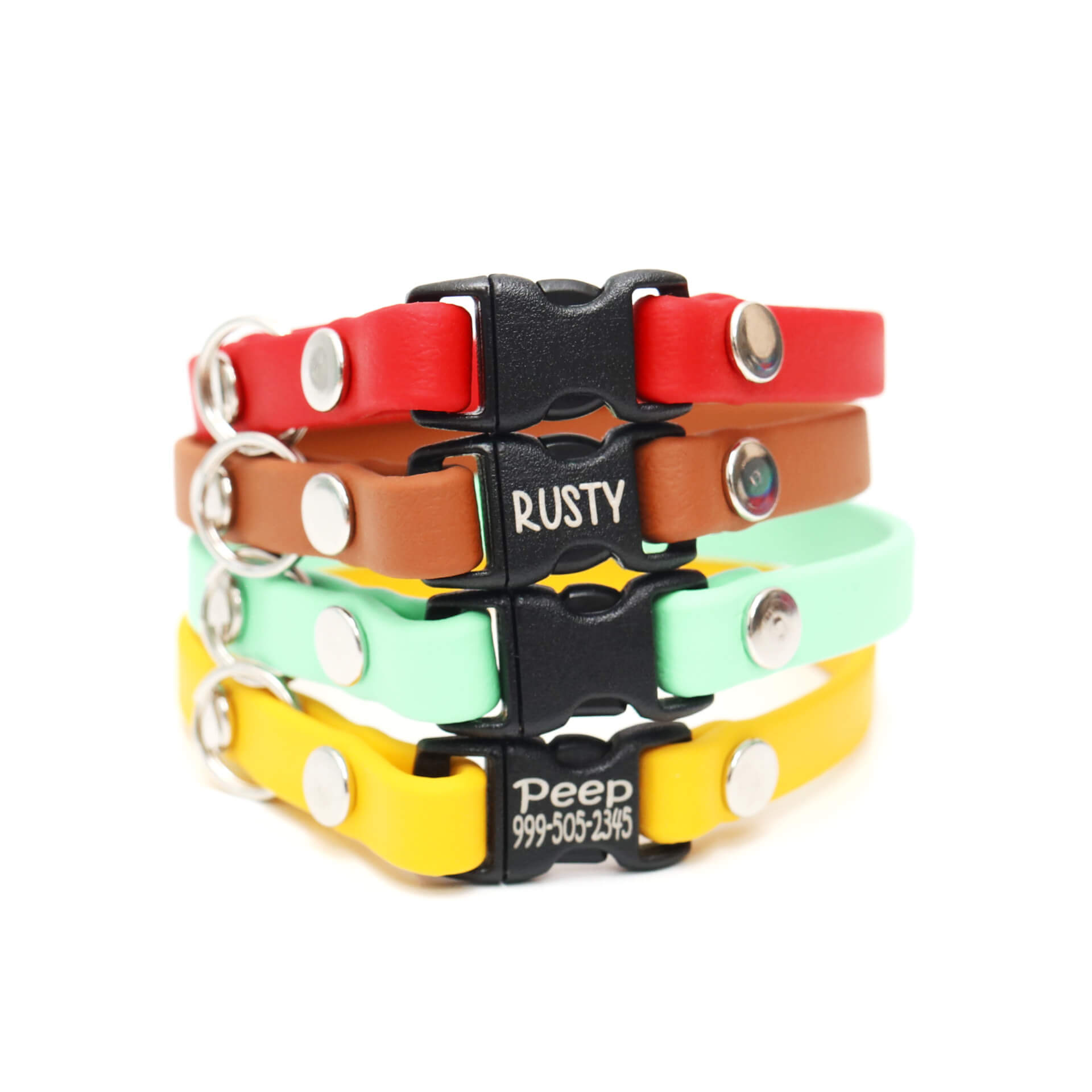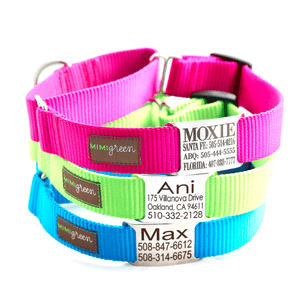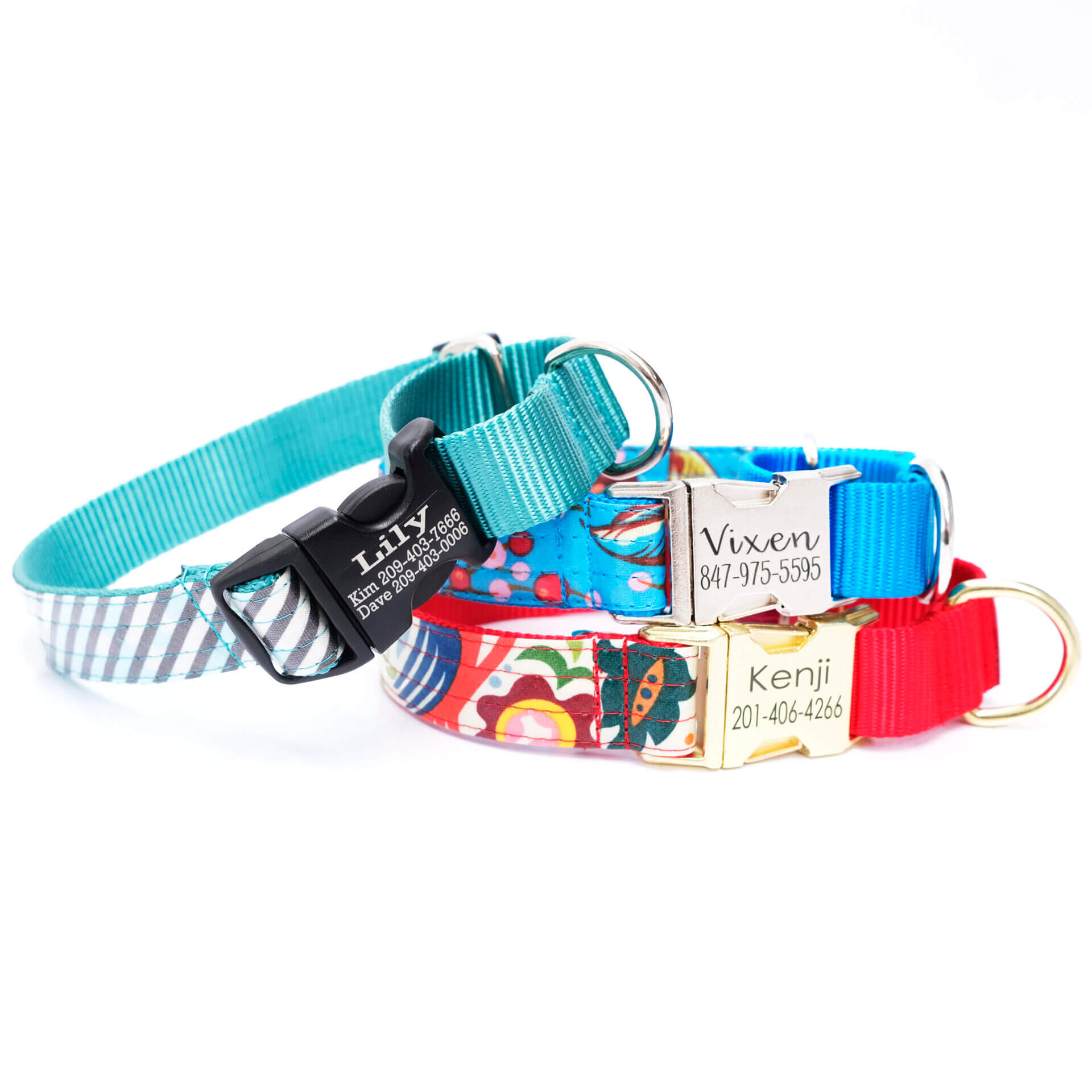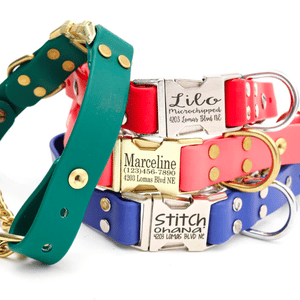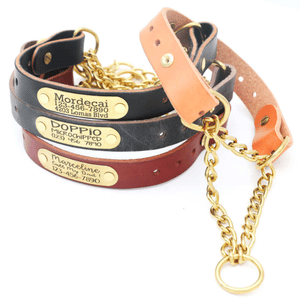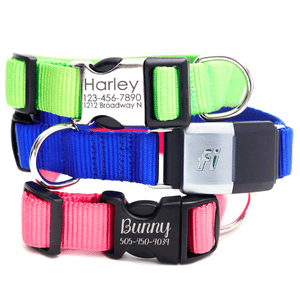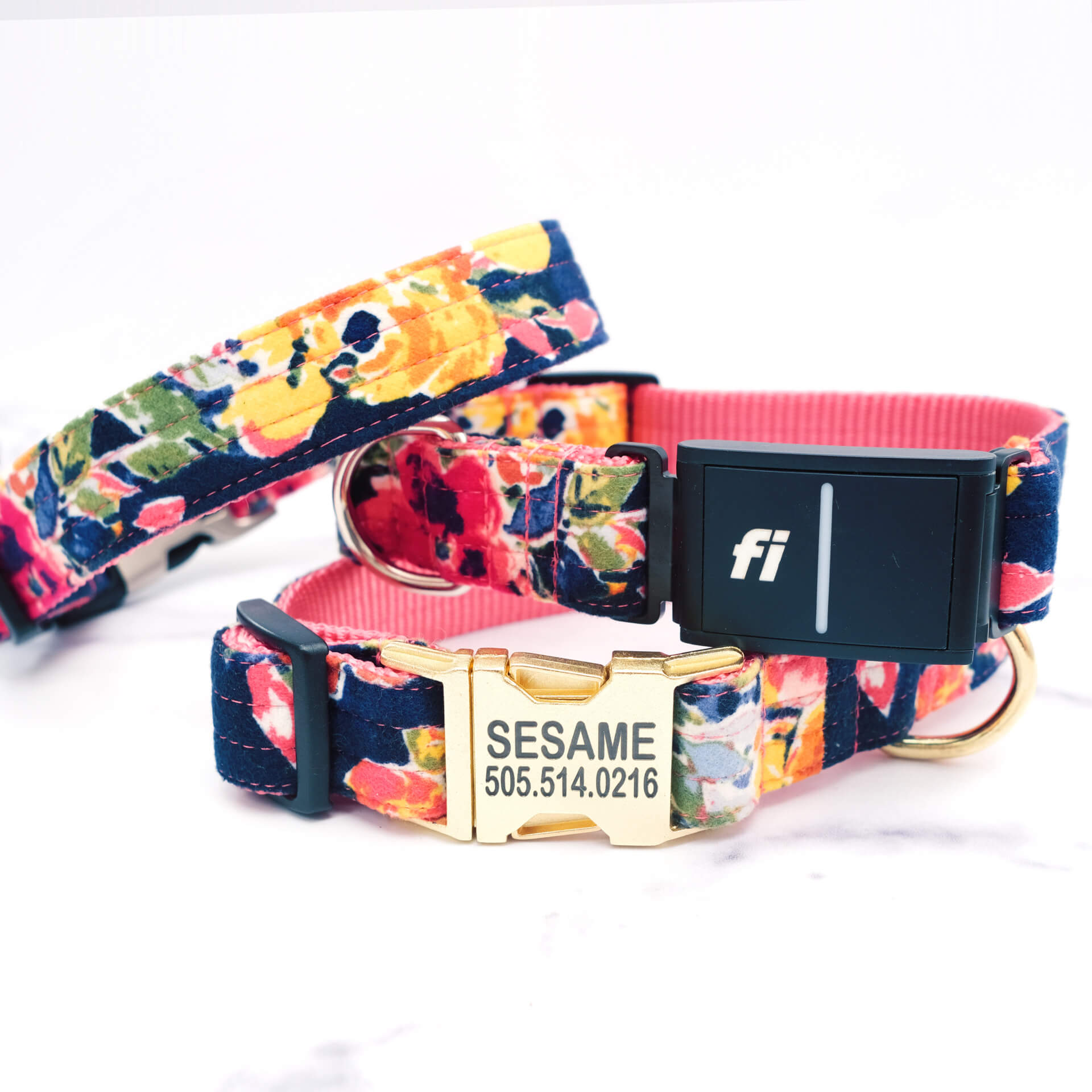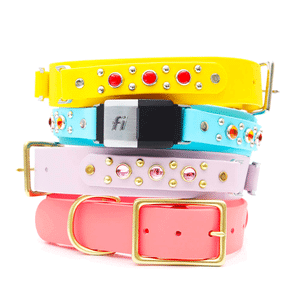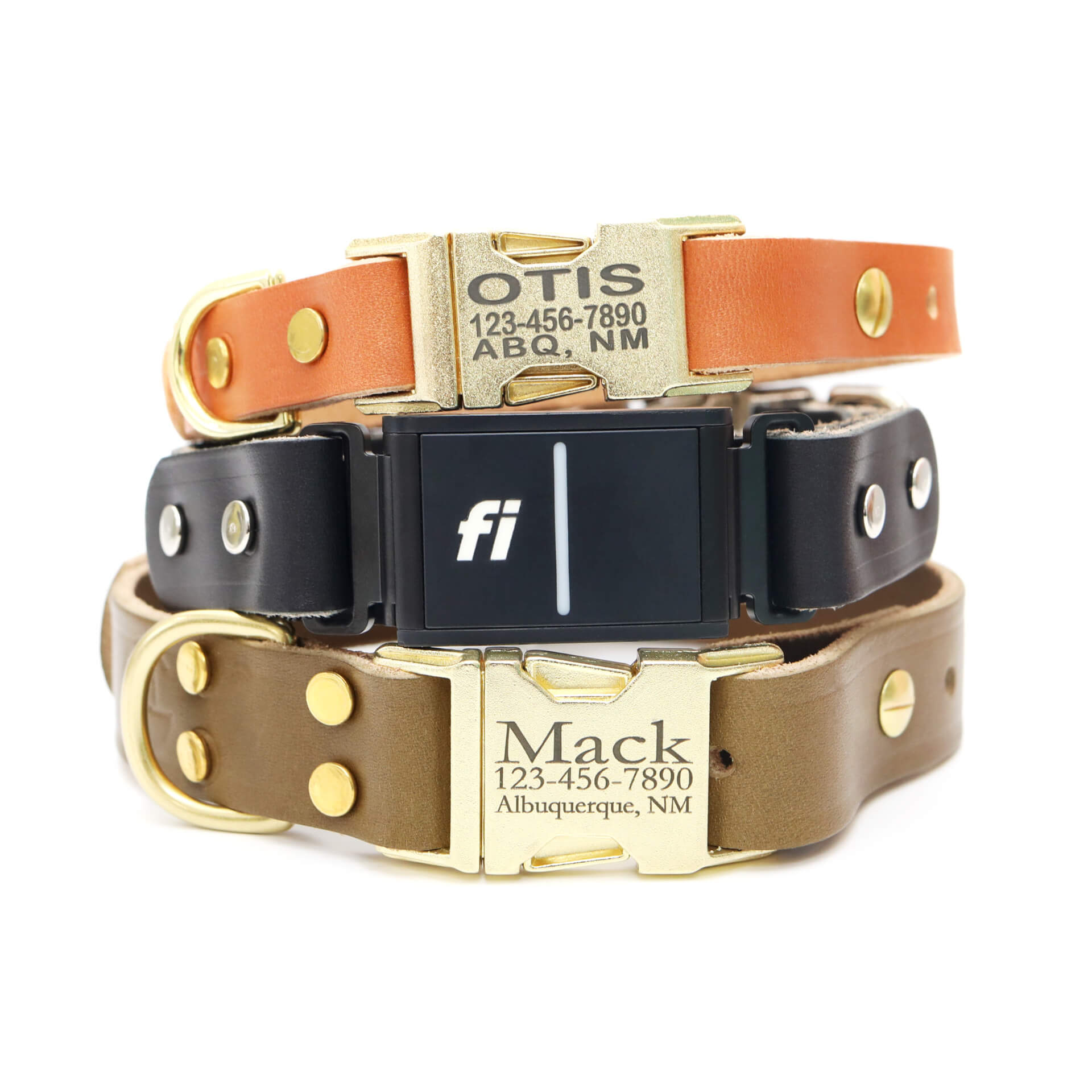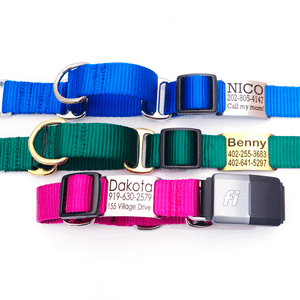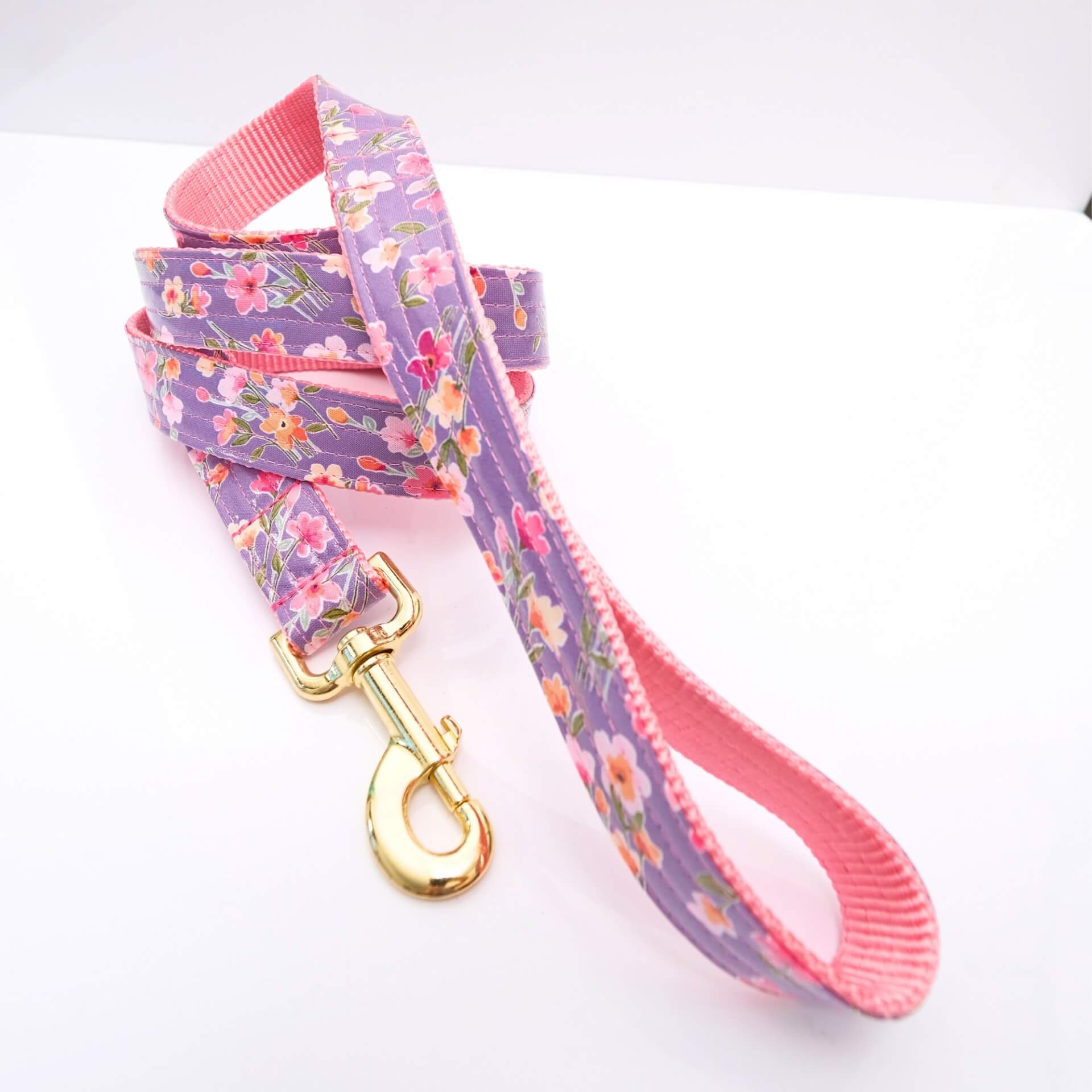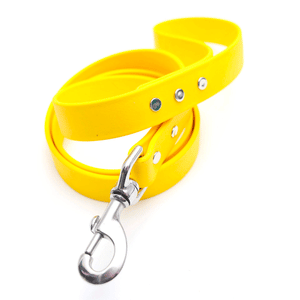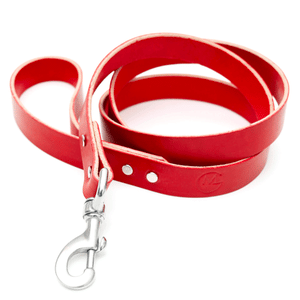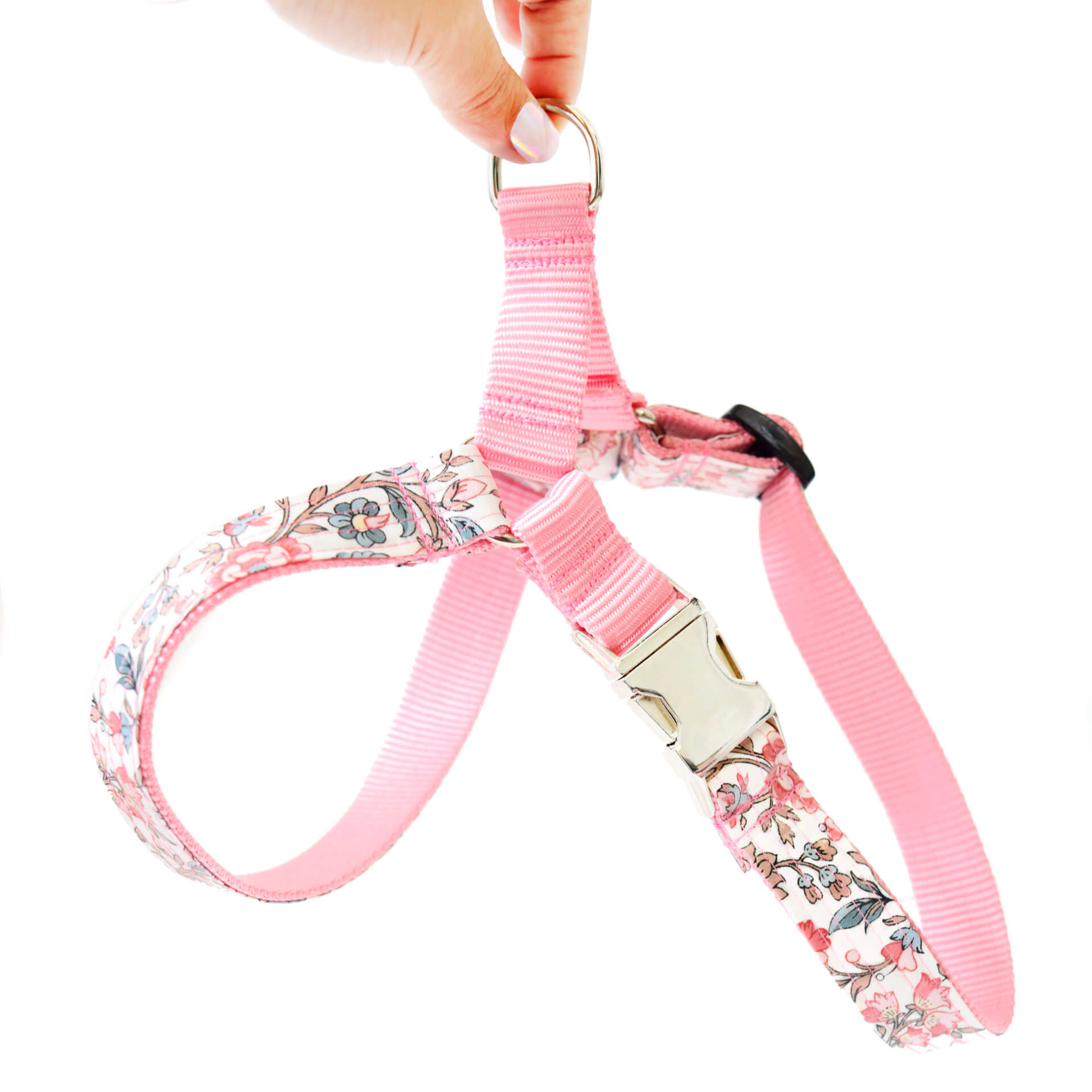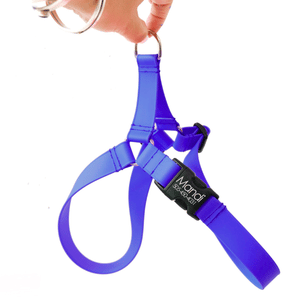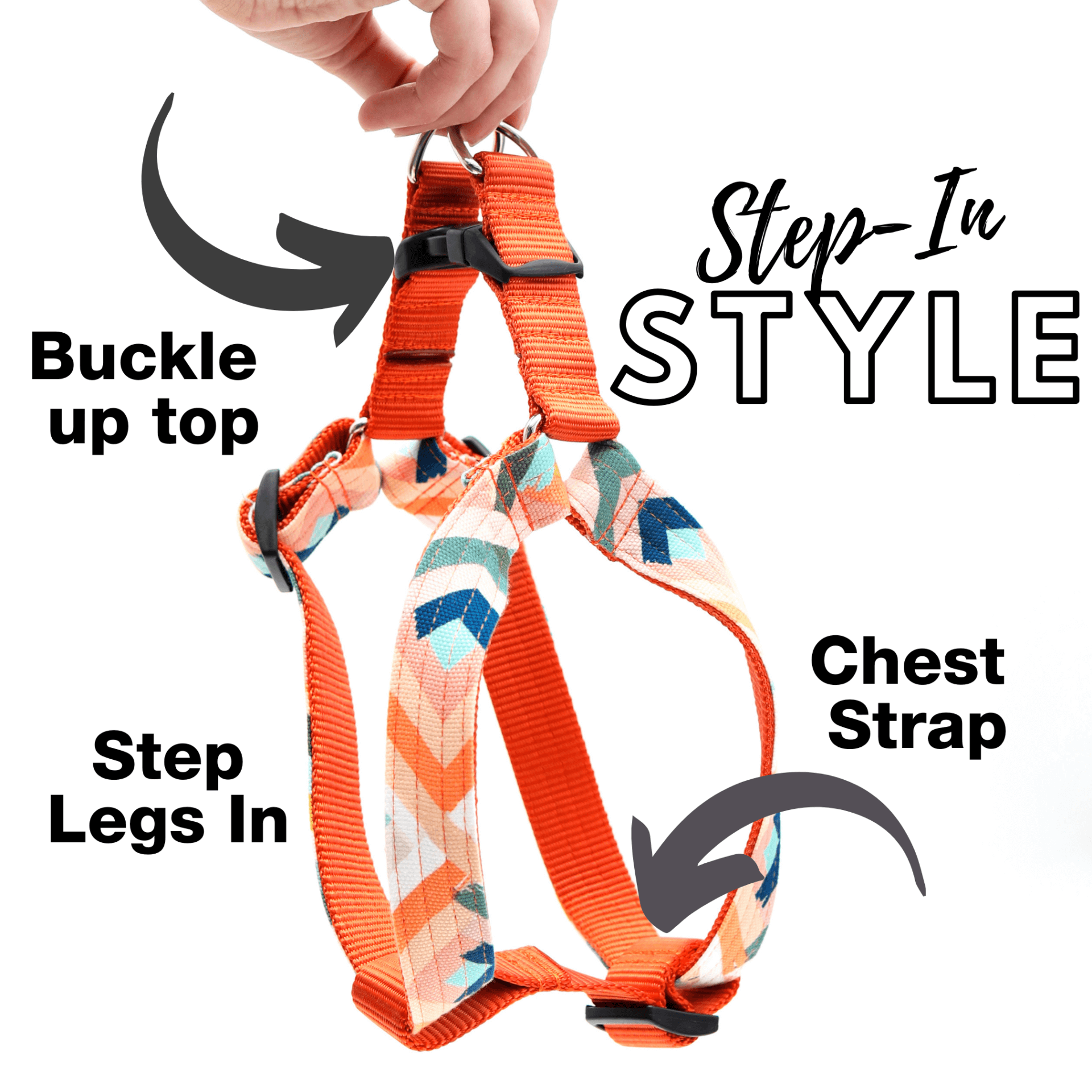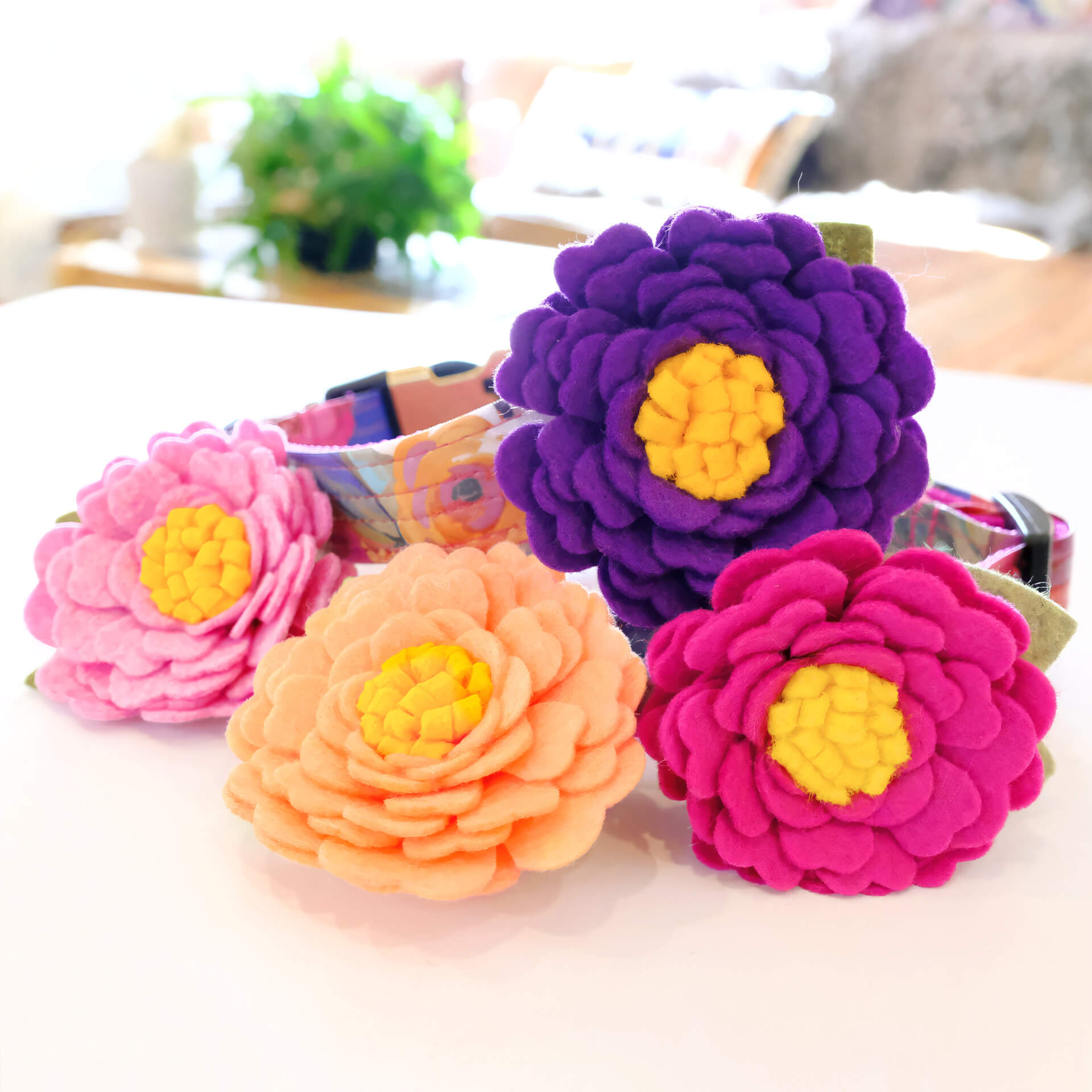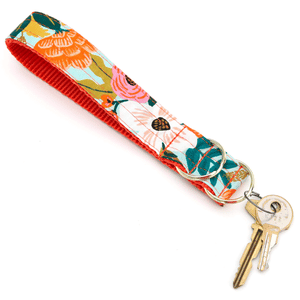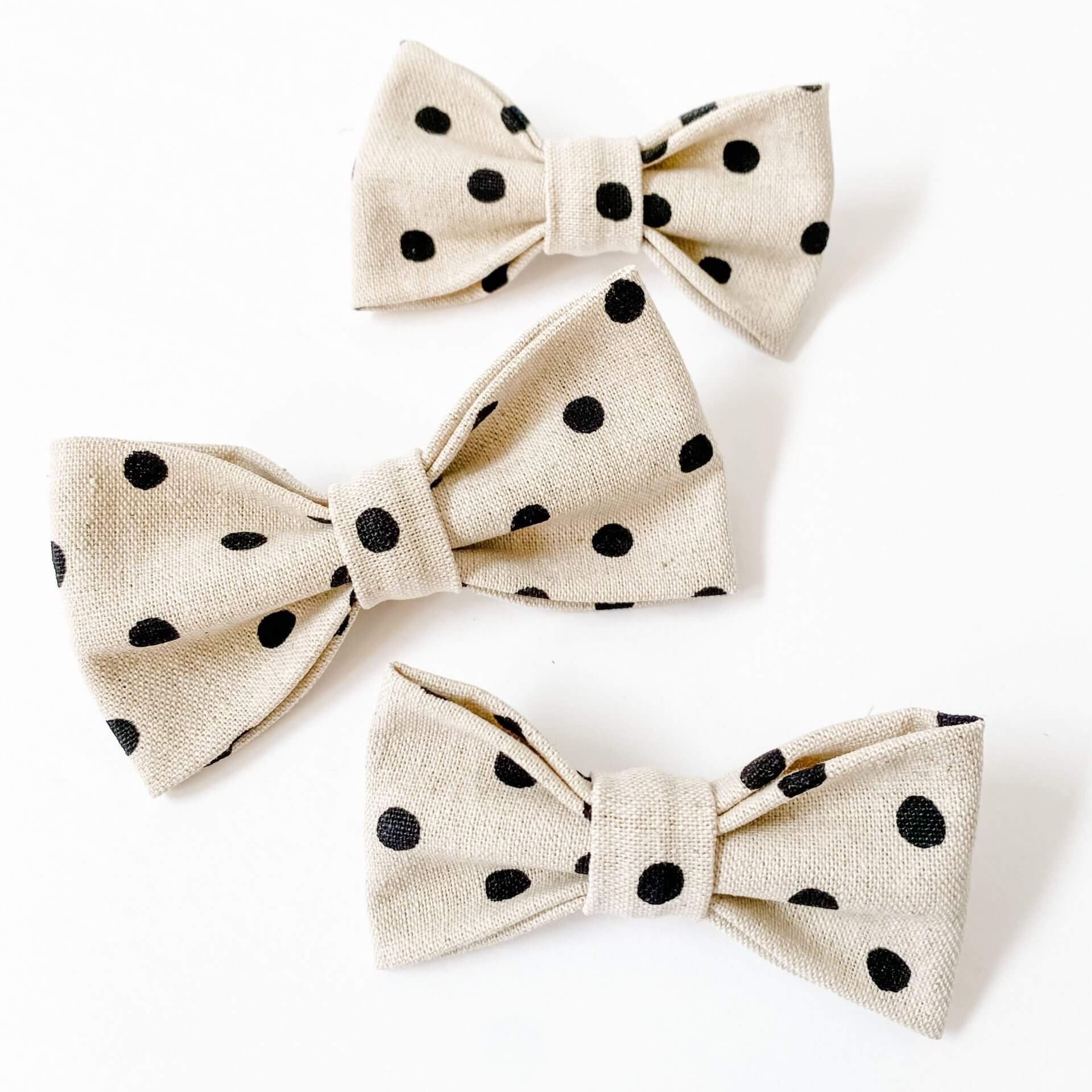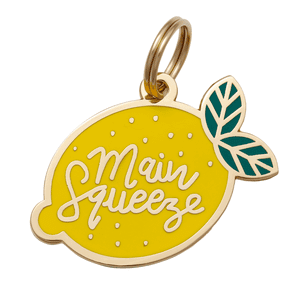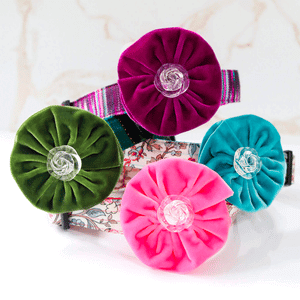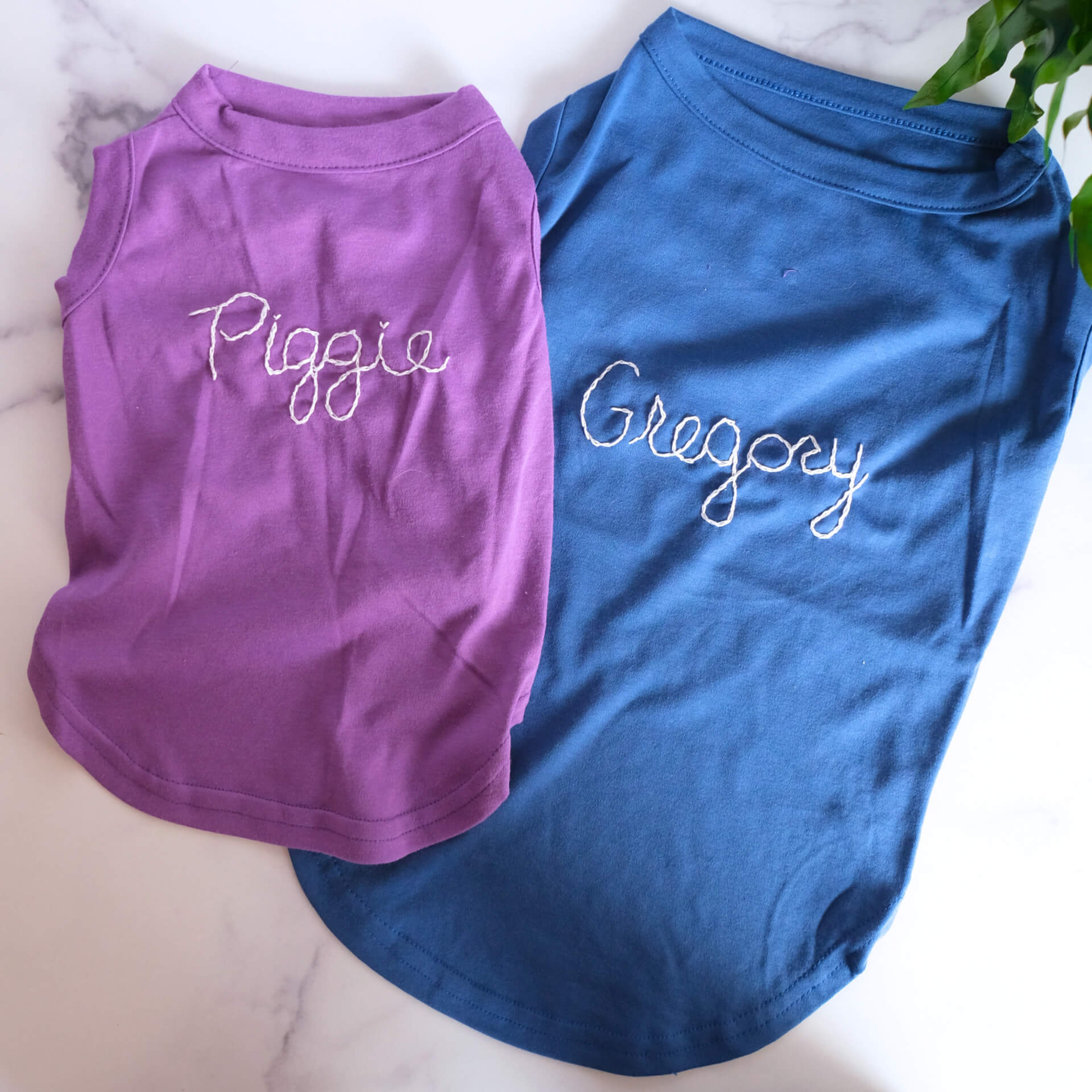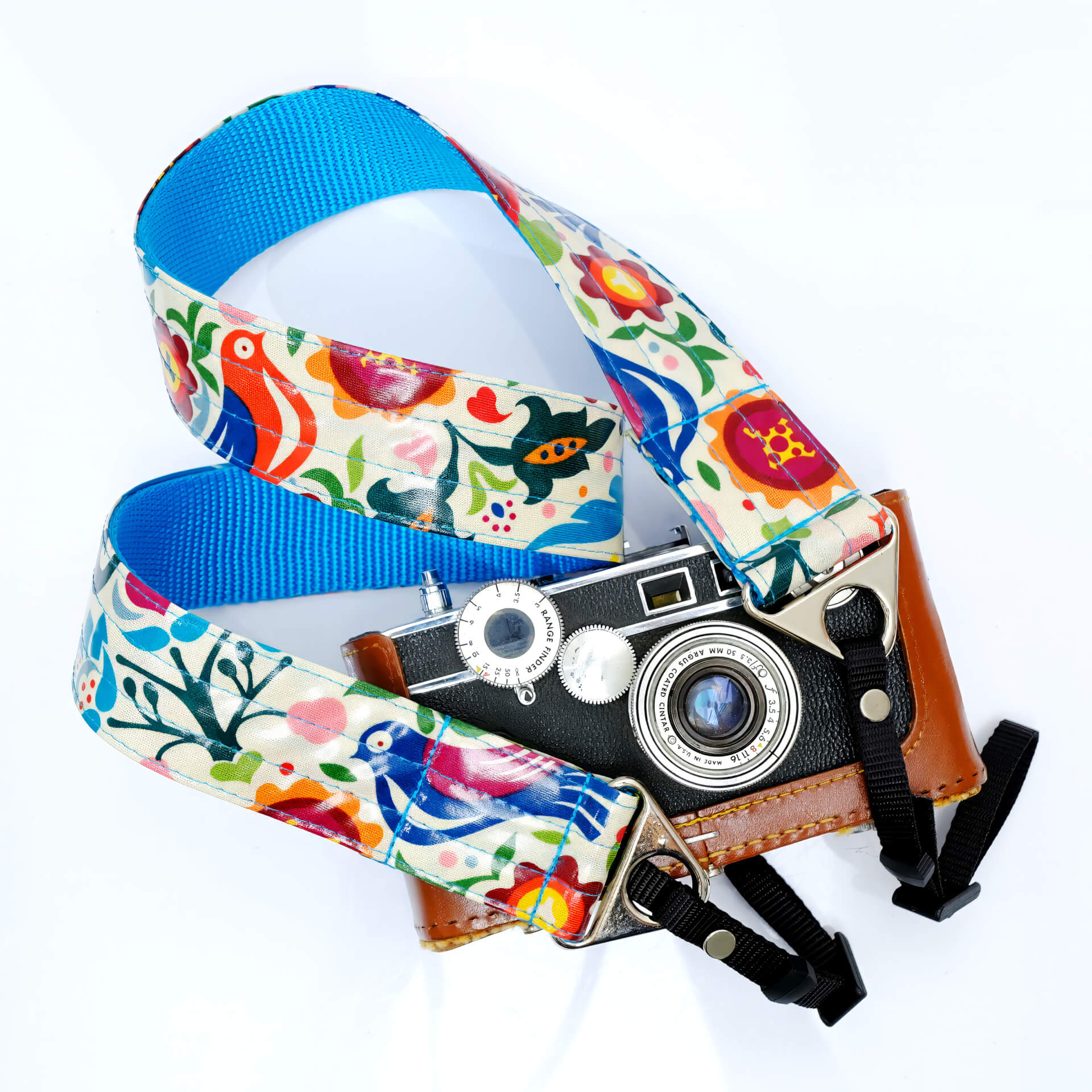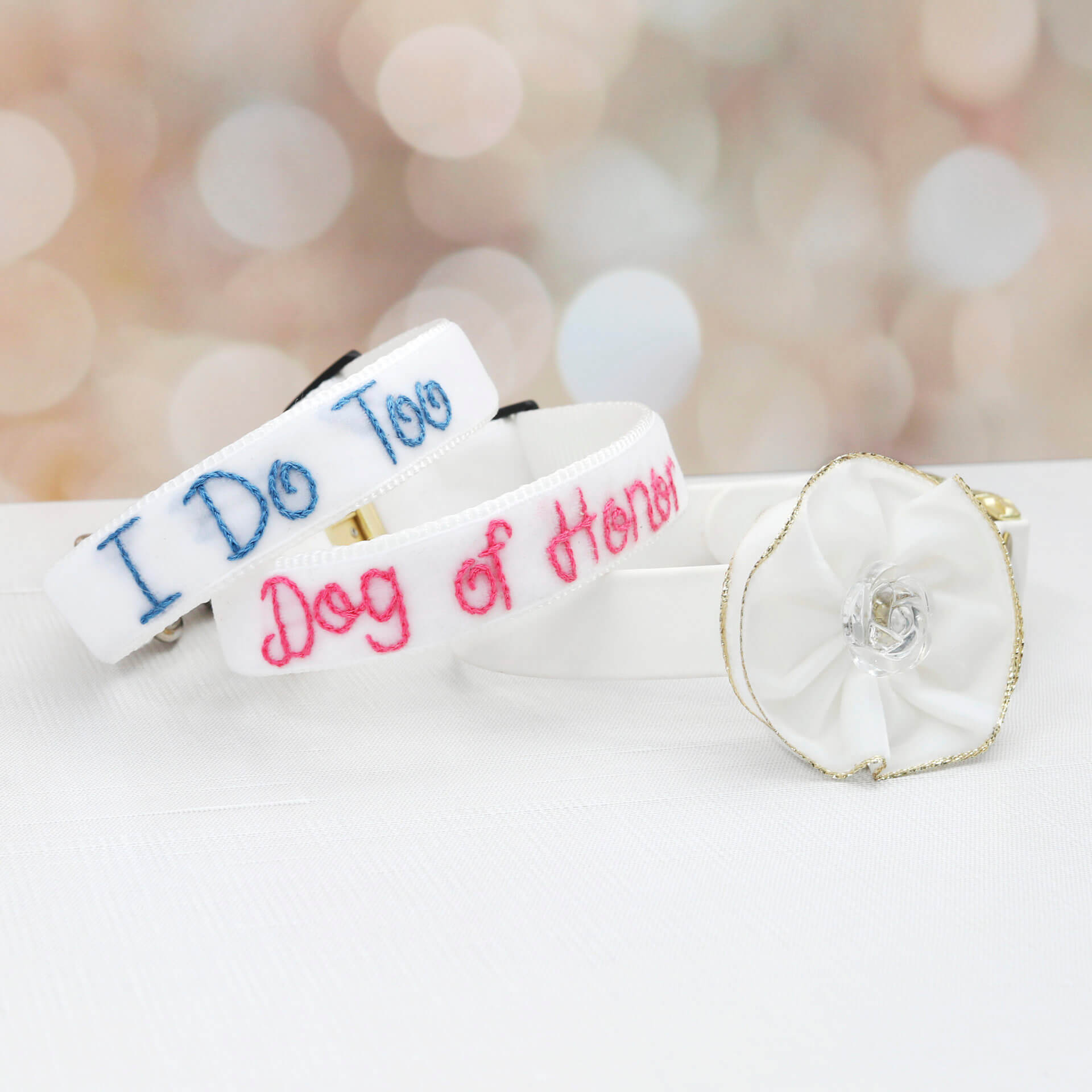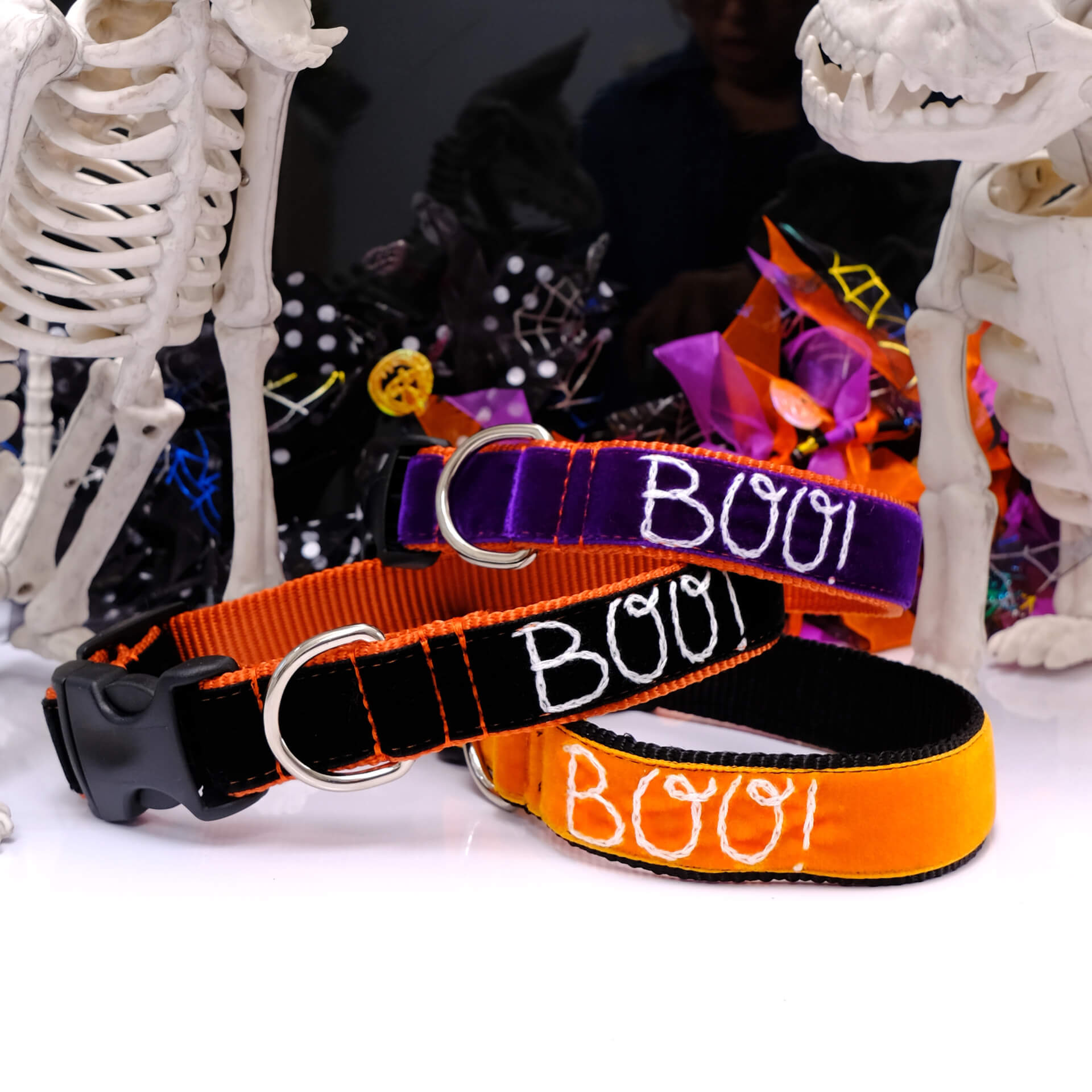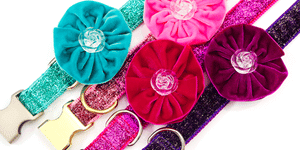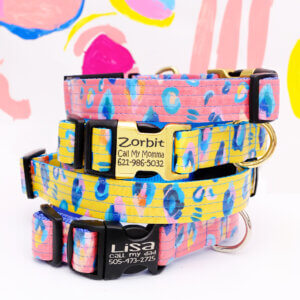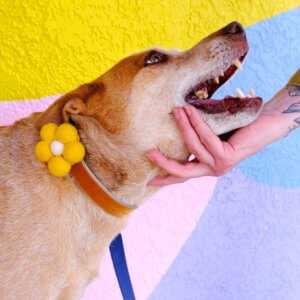Blog
Can Dogs Wear a Collar and Harness?
Yes, your dog can safely wear a collar and a harness at the same time, if they’re fitted correctly. Vets recommend a collar for ID and a harness for comfort and control on walks. Learn when to use both, how to avoid common mistakes, and which materials work best for your pup’s coat and lifestyle.
If you’ve ever worried about whether doubling up feels too heavy or could cause matting or chafing, you’re not alone.
The good news? A well-chosen collar and harness, made from the right materials and adjusted for your dog’s size and coat, can actually make walks safer and more comfortable.
We specialize in handcrafted, made-to-order collars and harnesses that match your dog’s coat type, personality, and lifestyle, from leather for long-haired pups to waterproof BioThane® for mud lovers. Plus, you can customize every piece for a perfect fit, so your dog never has to settle for generic gear that rubs or slips.
If you just needed the short answer, you’re all set. But if you want step-by-step tips, breed-specific advice, and our favorite fitting tricks to keep your dog comfy and safe, keep reading.
Why Use a Collar and a Harness Together?
For most dogs, wearing both makes sense, as long as you’re doing it for the right reasons. A collar keeps your dog’s ID tags secure at all times. Even the best-fitted harness can slip off during rough play or an unexpected dash through a tight fence gap. A collar adds that layer of backup you hope you’ll never need.
Meanwhile, a harness is the go-to for comfort and control, especially if your dog pulls on leash or has a delicate trachea. Unlike collars, harnesses distribute pressure more evenly across the chest and shoulders, protecting the neck from strain or injury.
For dogs with a talent for escaping, doubling up with a collar and harness can give you peace of mind. Many trainers and vets suggest using both for certain breeds, seniors with mobility challenges, or rescue pups who are still learning leash manners.
Common Myths & Mistakes to Avoid
Plenty of pet parents fall into the same traps, so let’s clear them up:
First, no collar lasts forever. It’s a myth that they’re indestructible. Cheap materials can fray or crack, while even the best-made collars should be checked regularly for signs of wear.
Another common mistake is choosing a size based only on your dog’s weight. Neck size, coat type, and breed shape matter far more. That’s why at Mimi Green, we encourage measuring your dog properly and adjusting after grooming.
Over-tightening a harness is another problem we see all too often. A harness that’s too snug can rub sensitive skin raw or restrict shoulder movement. And don’t assume every collar or harness is one-size-fits-all, breed, age, and your dog’s coat should all guide your choice.
How to Fit a Collar & Harness Correctly
Sizing Your Dog’s Collar
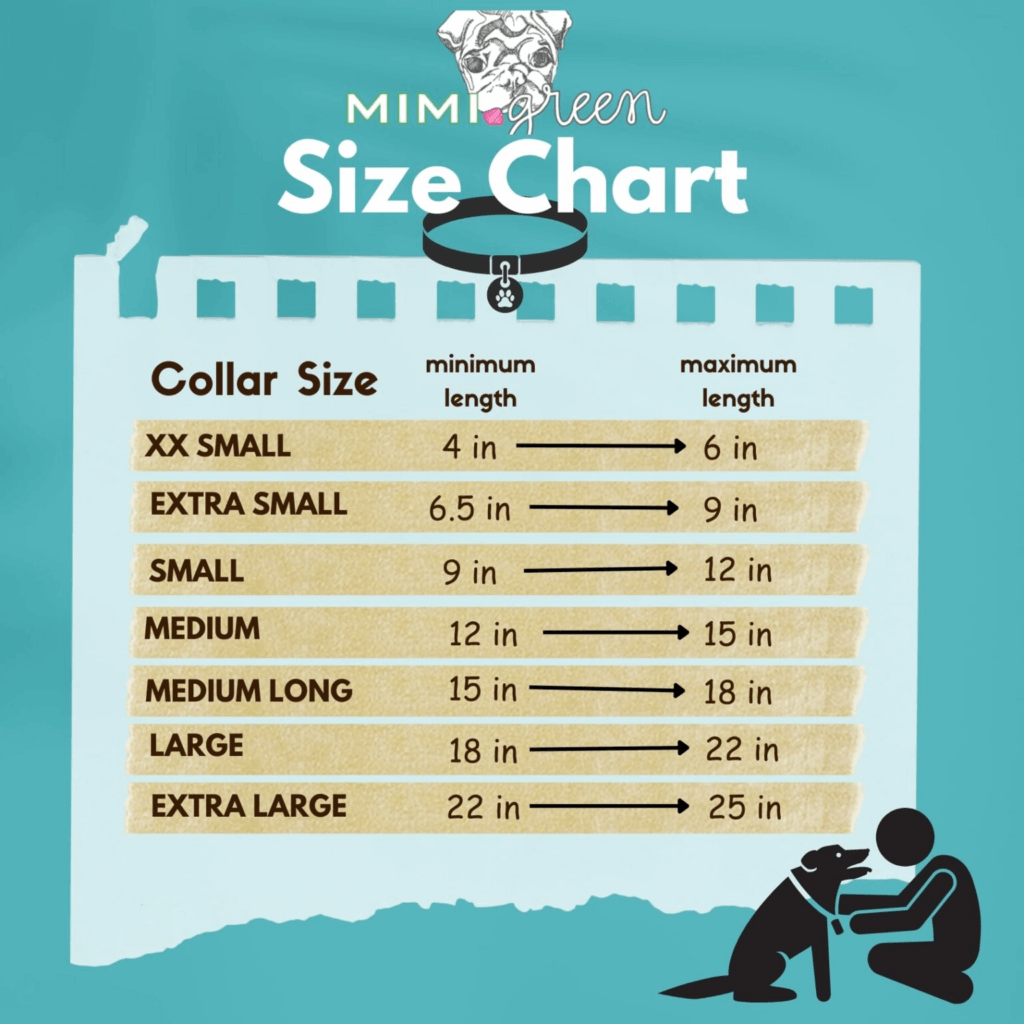
Start with the tried-and-true two-finger test. Once the collar is on, you should easily slide two fingers between the collar and your dog’s neck. Too tight? It could chafe or cause rashes. Too loose? A determined pup might slip right out.
Breed and coat matter here, too. Dogs with long, curly, or double coats, like Golden Retrievers or Poodles, often do better with leather collars that reduce matting.
For pups with sensitive skin, hypoallergenic materials are better. Check out this article for a better understanding: Best Collars For Sensitive Skin | Hypoallergenic Options.
Sizing the Harness
No single harness works for every dog. Pick what fits your pup’s shape, coat, and daily adventures:
- Y-Harness: Gives shoulder freedom and even weight distribution, great for active walkers.
- Back-clip harness: Good for calm dogs who don’t pull much; easy to put on and take off.
To keep your dog comfy:
- Read our Dog Harness Guide
- Check that the straps don’t rub behind the front legs or under the armpits.
- Watch for signs of matting on long coats, rolled edges or harnesses can help.
- Adjust seasonally. Dogs shed and grow out coats, so a harness that fit in winter might be too loose come summer.
Should I Clip the Leash to Both?
Some owners double-clip the leash to both the collar and harness. Here’s what you need to know:
- Pros: Adds a layer of safety for dogs who slip out of gear or love to pull sudden Houdini moves.
- Cons: For some dogs, double clips can feel awkward or restrict natural movement.
Many trainers suggest a backup clip for strong pullers or nervous dogs in new places. If you do use two attachments.
- Keep your leash short enough to avoid tangling.
- Skip retractable leashes, they’re prone to twist and jam when clipped to multiple points.
Is It Safe for Puppies to Wear Both?
Puppies can learn to wear a collar and harness early, if you introduce both gently.
- Start slow: Use calm treats and reward your puppy for sniffing and wearing each piece.
- Positive reinforcement: Keep sessions short and pair putting on gear with good things, snacks, toys, praise.
- Watch for stress: If your puppy freezes up, scratches, or tries to chew, take it off, try again later, and go even slower next time.
When done right, a puppy that grows up comfortable wearing both is far less likely to fuss or fear them as an adult.
Vets’ & Trainers’ Tips for Double Wear
Before you clip on both, here’s what pros want you to know:
- Collar for ID, harness for walks: Vets generally recommend that your dog always wears a collar with up-to-date ID tags. A harness is best for walking or training sessions, but it doesn’t replace a collar for everyday identification.
- Small breeds sometimes skip collars on leash: Tiny or fragile-necked dogs, like Yorkies or Chihuahuas, may be better walked with just a well-fitted harness to avoid trachea strain. But consider keep the collar on indoors for safety.
Using remote training collars, commonly referred to as e-collars or shock collars, alongside harnesses can be risky.
If a harness shifts or tightens during use, it could increase pressure on your dog’s neck or chest when combined with an e-collar. If you’re considering a training tool like this, we recommend working with a certified trainer to ensure safe and humane use. At Mimi Green, we prefer positive reinforcement methods that build trust and reduce stress for pups.
Choosing the Right Materials for Comfort
Your dog’s coat, skin, and lifestyle should guide your choice. Here’s what works best:
For Long, Curly, or Matte-Prone Coats
Leather: Helps prevent tangles and matting under the collar.
For Active, Outdoorsy Pups
- Waterproof BioThane®: A game changer for muddy hikes, swims, and rainy-day walks. Easy to clean, odor-resistant, and durable.
For Sensitive Skin
- Hypoallergenic materials: Like cotton can be gentler on sensitive skin, especially when paired with high-quality webbing. All our fabric collars use a premium nylon base that’s softer and more durable than standard pet-store options. While we don’t offer leather harnesses, our thoughtfully selected materials are designed with comfort and skin safety in mind, perfect for pups prone to rashes or hot spots.
Common Worries About Wearing Both, Solved!
- “Will my dog feel uncomfortable?”
Solution: Not if you size things right. The collar should pass the two-finger test, and the harness should fit snugly without pinching or restricting movement. - “Could the collar get caught on the harness?”
Solution: It’s rare, but a poor fit can cause snagging. Choose gear designed to sit well together, and check that tags don’t dangle into buckles. - “Can my dog sleep wearing both?”
Solution: For most dogs, a collar with ID is enough overnight. Remove the harness to prevent rubbing or tangling while your pup snoozes.
When NOT to Use a Collar and Harness Together
- Tie-Outs: We don’t recommend using tie-outs at all. In our experience, they’re when we see the most broken buckles and unhappy outcomes. But if you must use one, never attach a tie-out cable to a harness alone, a pulling dog can slip out or injure their shoulders. A properly fitted collar (not under tension for long periods) is safer, but always supervise.
- Retractable leashes: Using one with both a collar and harness increases the risk of tangling and sudden jerks. A standard leash gives you better control and keeps your dog safer.
Mimi Green’s Handmade Solutions

When you want your dog’s collar and harness to actually work well together, and look good, too, that’s where we come in:
- Custom sizing: Every Mimi Green collar and harness is made-to-order for your dog’s neck and chest measurements. No guesswork, just a fit that stays comfy.
- Matching sets: Mix and match collars, harnesses, and leashes in velvet, waterproof BioThane®, or leather for a pulled-together look.
- USA-made quality: Crafted by our family-owned team, using materials we trust, so your dog’s gear won’t rub, fray, or fall apart after a season.
- Special extras: From limited edition designs to Fi-compatible GPS collars, we help keep your dog safe, stylish, and ready for adventure.
Final Tips to Keep Your Pup Safe & Stylish
A collar and harness combo only works if you check in regularly:
- Look for any rubbing, chafing, or matting, especially under harness straps and behind the ears.
- Adjust sizing as needed with seasonal coat changes or after a grooming session.
- Replace worn or frayed parts, even the best-made collar won’t last forever if your dog’s an everyday adventurer.
Ready to Find Your Pup’s Paw-fect Match?
If you’ve decided your dog’s ready for both a collar and harness, the right fit and materials make all the difference. That’s where we come in.
At Mimi Green, we handcraft every collar and harness to order, so your pup gets:
- Custom sizing and materials that match their coat type, skin needs, and lifestyle, whether they splash through creeks or curl up on your lap.
- Matching sets that make ID tags, harness, and leash feel like one well-designed system, not an awkward mashup.
- USA-made quality that means no scratchy nylon, no cookie-cutter sizing, just thoughtful design you can trust.
Explore our full collection today and see how our custom sets help your dog wear a collar and harness comfortably, while looking downright adorable on every walk.

